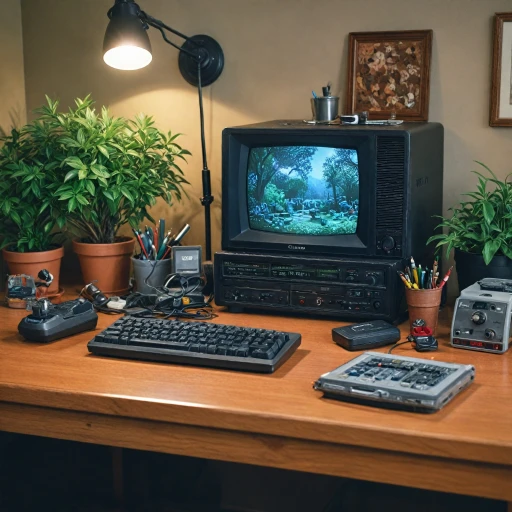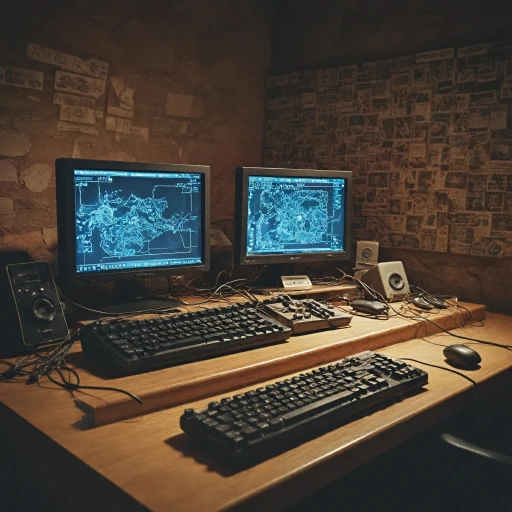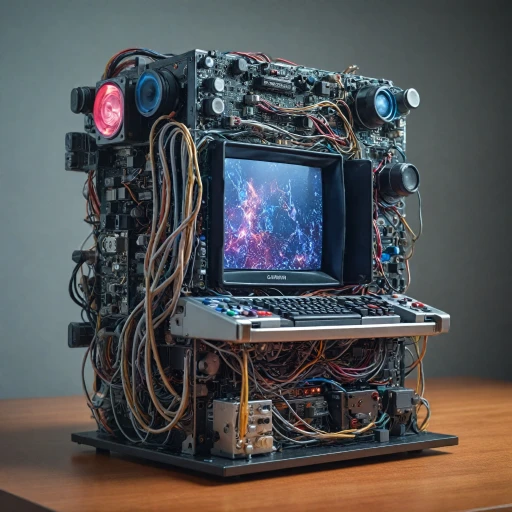
Understanding HDMI Port Versions
The Evolution of HDMI Ports and Their Significance in Gaming
Understanding HDMI port versions is vital for any gaming enthusiast looking to maximize their experience. HDMI, or High-Definition Multimedia Interface, has been the standard for connecting displays to gaming consoles, graphics cards, and monitors. Over the years, this standard has evolved to accommodate the growing demands of high-resolution and high-refresh-rate displays.
Initially, HDMI provided sufficient bandwidth and data rates to support the displays of its time. However, as gaming technology advanced, so did the need for HDMI ports capable of handling higher data rates and resolutions. For instance, HDMI 2.0, which debuted several years ago, provides increased bandwidth to support 4K resolution at 60Hz. This is crucial for seamless gaming experiences, especially with consoles like the Xbox Series.
HDMI 2.1 is the latest iteration, offering even more remarkable advancements. With support for higher data rates up to 48 Gbps, it can handle 8K resolution or even 4K at enhanced refresh rates, significantly enhancing the gaming experience. Moreover, it facilitates up to 10-bit color depth and Variable Refresh Rate (VRR), making it a game-changer for gamers looking to optimize their gaming setup.
While HDMI remains popular, DisplayPort is another option to consider for connecting monitors and graphics cards. It offers comparable features and data rates, offering gamers flexibility in their choice of connection. For those seeking to understand more about how these technologies impact data and displays in gaming consoles, you can explore further insights in our article on data management in gaming consoles.
The Importance of Refresh Rates and Resolution
Unraveling the Impact of Refresh Rates and Resolution on Gaming
When diving into the world of gaming displays, understanding the relationship between refresh rates and resolution is crucial for optimizing your gaming experience. Together, they determine how smooth and visually appealing your games appear, directly impacting your performance and immersion.
Refresh rates, measured in hertz (Hz), indicate how often your monitor updates with new information. Higher refresh rates translate to smoother motion, making a significant difference in fast-paced games. For example, a 60Hz display updates 60 times per second, whereas a 120Hz display does so 120 times per second. As gaming continues to progress, displays supporting 144Hz and even up to 240Hz have become more common, enhancing fluidity in gameplay.
Resolution, on the other hand, determines the level of detail displayed on your screen. From Full HD (1080p) to Ultra HD (4K), higher resolutions show more detailed images. The trick is to find the right balance between resolution and refresh rate, as higher resolution often demands more from your graphics card and can affect performance.
HDMI ports and displayport to HDMI connections play an essential role here. Depending on their specifications, they can offer different levels of maximum bandwidth, typically measured in gigabits per second (Gbps). This maximum data rate impacts how well they support certain resolution refresh combinations. For example, HDMI 2.1, offering up to 48Gbps, accommodates 4K at 120Hz with ease, significantly elevating your gaming setup.
The choice between HDMI and displayport also depends on the devices you use, including gaming consoles like the Xbox Series X, and the type of gaming you engage in. While HDMI is common in most modern displays, displayport often offers higher bandwidth, which can be beneficial for high-refresh-rate monitors.
Remember, your HDMI cables matter too. A high-quality, high-bit HDMI cable ensures proper data transmission, thereby maintaining your desired refresh and resolution performance without compromise. As technology evolves, so will standards and compatibility, but understanding the current landscape will help you make informed decisions today.
Compatibility with Gaming Consoles
Ensuring Your Gaming Console Works Seamlessly with HDMI Ports
When it comes to gaming consoles like the Xbox Series, compatibility with HDMI ports is crucial for an optimal gaming experience. The right HDMI port ensures that your console can deliver high-quality graphics and smooth gameplay. Understanding the nuances of HDMI versions and their compatibility with gaming consoles can make a significant difference.
Modern gaming consoles typically support HDMI 2.0 or higher, which is essential for handling the high bit rates required for 4K resolution and high refresh rates. These ports offer a maximum data rate of up to 18 Gbps, allowing for vibrant bit color and smooth transitions in fast-paced games. However, if you're aiming for 8K gaming or higher refresh rates, HDMI 2.1, with its increased bandwidth of 48 Gbps, is the standard to look for.
It's also important to consider the compatibility of your console with your monitor or TV. Not all displays support the advanced features of HDMI 2.1, such as Variable Refresh Rate (VRR) or Auto Low Latency Mode (ALLM). Therefore, ensuring that your display can handle these features is crucial for a seamless gaming experience. If you're using a gaming setup that includes multiple displays, a switch might be necessary to manage the connections efficiently.
For those who are considering using DisplayPort to HDMI connections, it's essential to understand the differences in data transfer capabilities. While DisplayPort offers higher bandwidth and supports features like Display Stream Compression (DSC), ensuring compatibility with your console's HDMI output is vital. For more insights on this, you might want to explore understanding the connection between DisplayPort and HDMI for gaming consoles.
In conclusion, ensuring your gaming console is compatible with the right HDMI port and display setup is key to maximizing your gaming experience. By understanding the specifications and compatibility requirements, you can future-proof your setup and enjoy the latest gaming advancements.
The Role of HDMI Cables in Gaming
The Vital Role of Quality HDMI Cables in Gaming
When setting up your gaming environment, the choice of HDMI cables is crucial and shouldn't be overlooked. These cables are responsible for transmitting audio and video data from your console to the display, and they directly impact the quality of your gaming experience. Choosing the right cable can mean the difference between a smooth gaming session and one disrupted by lag or poor visuals. A higher standard HDMI cable offers significant improvements in bandwidth, which corresponds to the maximum data rate the cable can handle. For gamers, this is particularly important as it affects the resolution and refresh rates your display can achieve. With the advent of next-gen consoles such as the Xbox Series, it's essential to match your HDMI cable's capacity to the console's output for optimal performance. Here are a few considerations for selecting the proper HDMI cable:- Bandwidth and Rates: Opt for HDMI cables that support the necessary bandwidth to handle high data rates, ensuring support for resolutions like 4K with high refresh rates.
- Certification and Quality: Certified HDMI cables are tested for speed and reliability. Look for cables that are marked "Premium Certified" to ensure they meet current standards.
- Future-proofing: Although HDMI 2.1 is the latest standard, consider future-proofing by investing in cables that support even higher data rates, which can cater to advancements in gaming technology.
Future-Proofing Your Gaming Setup
Future-Proofing Your Console Gaming Setup
When planning your gaming setup, it’s crucial to consider future-proofing, ensuring it can handle advancements in technology for years to come. With the rapid evolution of gaming standards and capabilities, you need to choose HDMI and DisplayPort options that safeguard against obsolescence. One of the key aspects of future-proofing is evaluating the bandwidth offered by HDMI and DisplayPort. HDMI cables are commonly available with data rates that vary, but for optimal gaming performance, you should aim for a 48 Gbps HDMI, which supports a higher bit rate crucial for advanced gaming experiences. This version ensures that your displays can handle higher resolution refresh rates and the maximum data rate required for immersive graphics without lag or image distortion. Similarly, DisplayPort tends to offer higher bandwidth, with DisplayPort 1.4 and above supporting 8K resolution with Display Stream Compression (DSC) and a 32.4 Gbps data rate. This can be beneficial for high-performance displays and setups that prioritize high refresh rates in competitive gaming scenarios. Selecting a monitor that supports higher refresh rates and bit color depth is essential. With these displays, your gaming experience is enhanced, whether you’re playing on the latest consoles like the Xbox Series or using powerful graphics cards. Monitors with the capability to switch between various input standards, such as HDMI and DisplayPort, offer versatility, especially as new standards emerge. As technology progresses, investing in cables and monitors compatible with both current and emerging standards will ensure that your gaming setup remains up-to-date without frequent upgrades. Being proactive about these choices now can save time and money in the long run, allowing you to enjoy seamless gaming as consoles and games continue to evolve.Common Misconceptions About HDMI Ports
Clearing Up Common Myths Around HDMI Ports
The world of HDMI ports can seem filled with jargon and misconceptions, especially for gamers looking to get the most out of their gaming setup. Here, we address several misunderstandings that often plague discussions around HDMI.
- Myth: Higher Gbps HDMI Count = Better Picture Quality
While it's true that higher bandwidth capabilities can improve picture quality, the overall gaming experience depends on more than raw data rates. Factors like resolution, refresh rates, and display compatibility are just as crucial. For instance, an HDMI port with up to 48 Gbps of bandwidth can support complex graphical data, provided your monitor can handle it. - Myth: All HDMI Cables Are Equal
Not all HDMI cables are created equal. The standard cables of a few years ago might not support the high bit requirements of today’s displays. Cables that support the necessary bandwidth are vital for achieving the maximum data transfer needed for higher resolutions and advanced features. - Myth: More Ports on a Monitor Increases Performance
The number of HDMI or displayport connections doesn't directly impact performance. What matters is how well these ports handle the maximum bit rate and refresh rate, aligned with what your graphics card supports. - Myth: HDMI Eclipses DisplayPort in Gaming
Although HDMI is widely recognized, DisplayPort often delivers superior bandwidth, allowing features like DSC (Display Stream Compression). This can be essential for those wanting a crisp display at high refresh rates and better bit color depth.
Before deciding on your port preference, consider both your current and future gaming needs. Compatibility with devices like the Xbox Series, alongside understanding the roles of HDMI ports and cables, will ensure you future-proof your gaming setup effectively.












